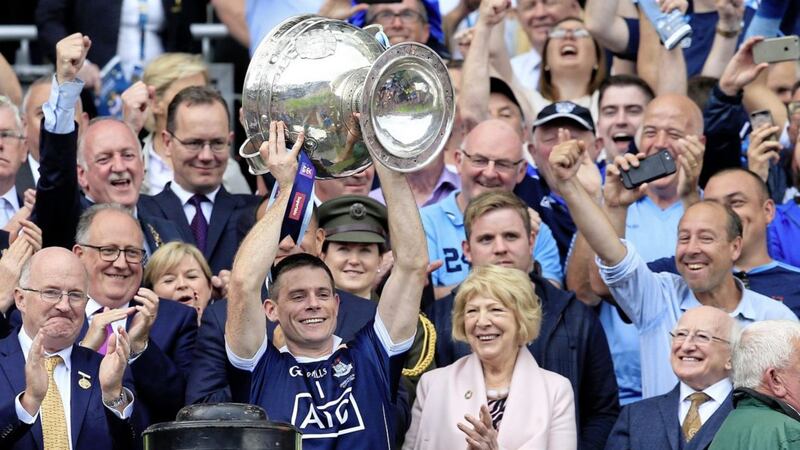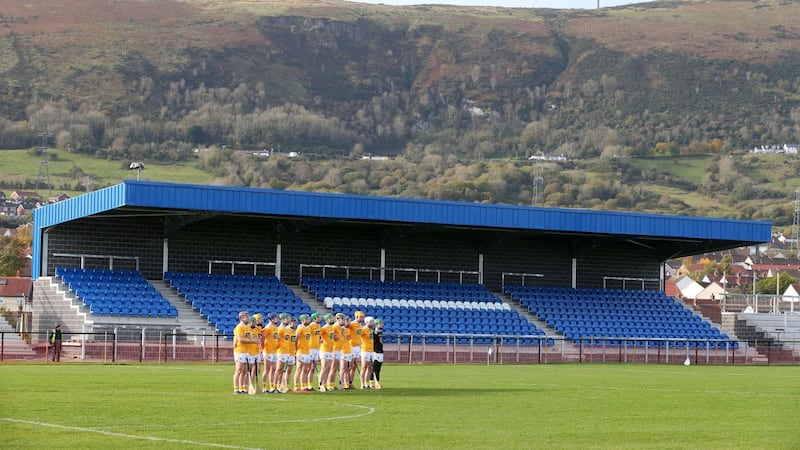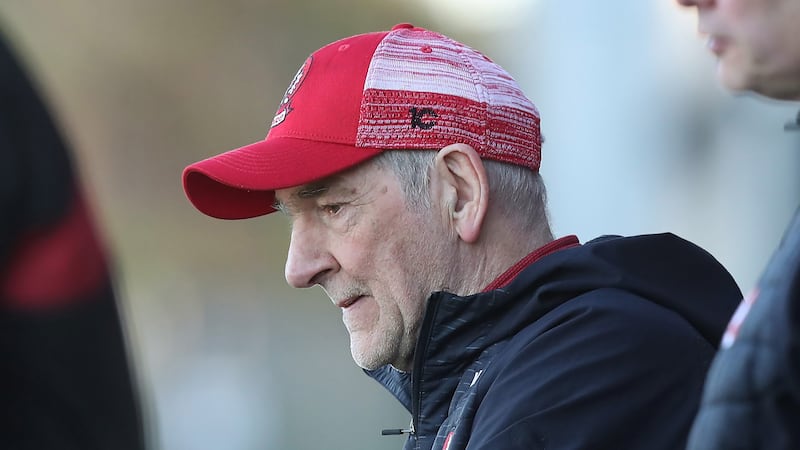SIX seconds. Doesn’t sound like a lot, but in terms of a kickout strategy it’s the difference in winning and losing.
Stephen Cluxton had a brief speed-wobble in the first half, losing two consecutive restarts during Tyrone’s period of ascendancy. They were the only two they lost all day.
The two of them were in the top four in terms of the length of time it took from the ball going dead until the Dublin goalkeeper put his boot to it during the first half.
At 17 and 18 seconds respectively, they were well above his average of just under 13 seconds (discounting the restarts that had lengthy stoppages before the kick was taken). Six times he got his kick away in under 11 seconds.
Compare that with Niall Morgan’s average restart time of 19 seconds. Having nailed the first five, Dublin took three-in-a-row off him, and on those three Tyrone took 25, 28 and 22 seconds to get the ball out.
It’s a huge part of why Dublin are so hard to play against. Cluxton and Morgan both had the ball on the tee with similar speed, but the Dublin players were much quicker to reset and find their position on the kickout.
Read More:
Conor Meyler: I played in the All-Ireland final just four weeks after breaking tibia
Tyrone will bounce back bigger and better from Dublin defeat says Kieran McGeary
'Don't stop believing' is Mickey Harte's plea to Tyrone
Kenny Archer: Brilliant boys in blue Dublin leave Tyrone's Red Hands feeling green
That gave Tyrone no time to push up as often as they would have liked. Despite an improvement, their commitment to doing so still wasn’t of the level they needed it to be. Of Dublin’s 14 first half kickouts, Tyrone only forced a contest on three.
Tyrone also struggled to win their own long restarts because their setup didn’t change and they failed to get enough bodies around the target for the kick.
Dublin had such joy on Tyrone’s (winning 6 of 15 in the first period) because they squeezed up quicker and harder, allowing them to put their physical advantage to use.
*****
DUBLIN NULLIFIED CAVANAGH
THERE were so many tactical tips offered Mickey Harte’s way in the lead-up that his head would have been spinning had he turned on the radio or looked near a newspaper.
One of the big talking points was whether Colm Cavanagh would step forward and play as an orthodox midfielder as part of a man-for-man approach by Tyrone.
The idea doesn’t look quite as mad now as it did then. The Moy man, after two brilliant displays in his last two outings, couldn’t really have done much about the way in which Dublin exposed him on Sunday.
They clearly came armed for the Red Hands pushing up and playing with just one sweeper, and so rather than go off the wings as they did to devastating effect last year, the Dubs attacked the middle this time.
Paul Mannion and Dean Rock kept their width inside, yet by kicking so seldom to the inside line, Dublin made Cavanagh into a vessel only for attempting to stop oncoming runners.
And yet on the rare occasion he stepped out – most notably for Cluxton’s kickout on what became the second goal – they did use the kick to expose his absence at the heart of Tyrone’s defence.
Because the rest had pushed up, once the like of McCaffrey, Kilkenny and O’Callaghan had their own man beaten, they were able to size Cavanagh up. He was coming to meet them but they were coming at full speed, making it almost impossible for the Moy man to stop them.
Cavanagh ended up as a useful target man at full-forward but while it helped facilitate their attacking response, there were opportunities for Dublin to get goals on the break in the final quarter.
On this particular conundrum, Tyrone were damned if they did, and damned if they didn’t.
*****
CIAN O’SULLIVAN GOING OFF WAS A BLESSING IN DISGUISE
EVER since they lost to Donegal in 2014, no player has been more central to the way in which Dublin have transformed themselves than Cian O’Sullivan.
Tyrone were always likely to leave Colm Cavanagh back but it was clear from the outset that O’Sullivan wasn’t as fit as Jim Gavin would have liked him to be.
He started almost as an orthodox midfielder, with James McCarthy assuming the sweeping role instead, but that was a significant factor in Tyrone’s big start.
Cathal McShane had the run of Croke Park in the opening 20 minutes and was one of the chief thorns for Dublin. But when O’Sullivan pulled up and went off, they moved the pieces around and were a much more effective defensive unit thereafter.
They’d already begun to shore things up by dropping much deeper on the whole, but McCarthy paid much greater heed to McShane when the change was made.
O’Sullivan’s replacement, Michael Fitzsimons, was much tighter to Mark Bradley. When Lee Brennan came on, Eoin Murchan switched off Sludden and on to him.
It took them a while to get things right defensively, but they did eventually and it had a massive impact.








